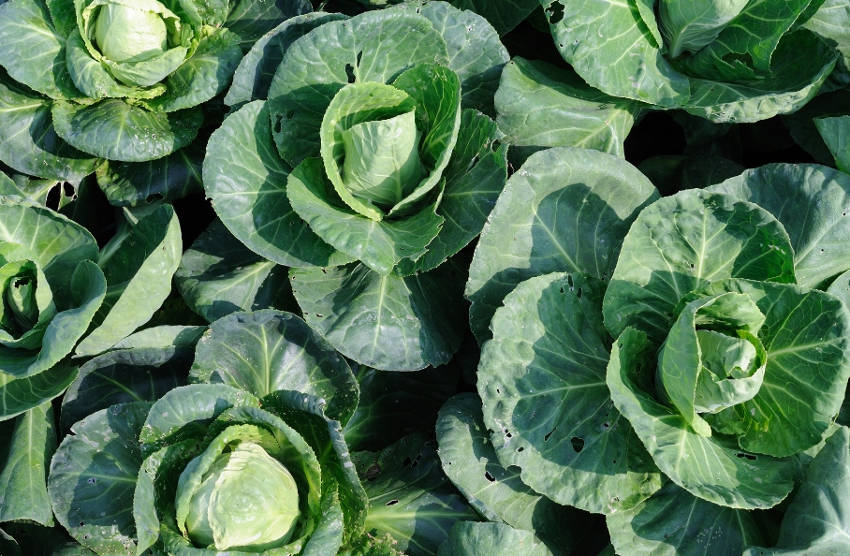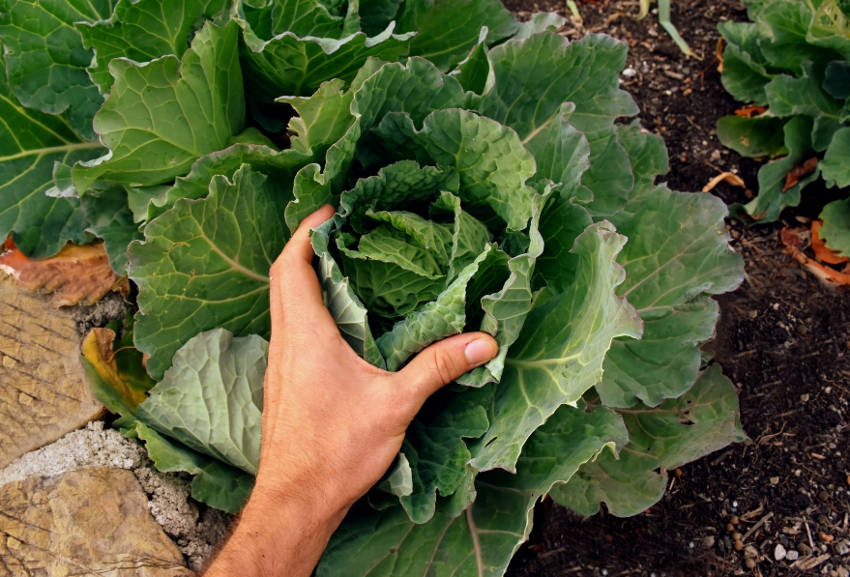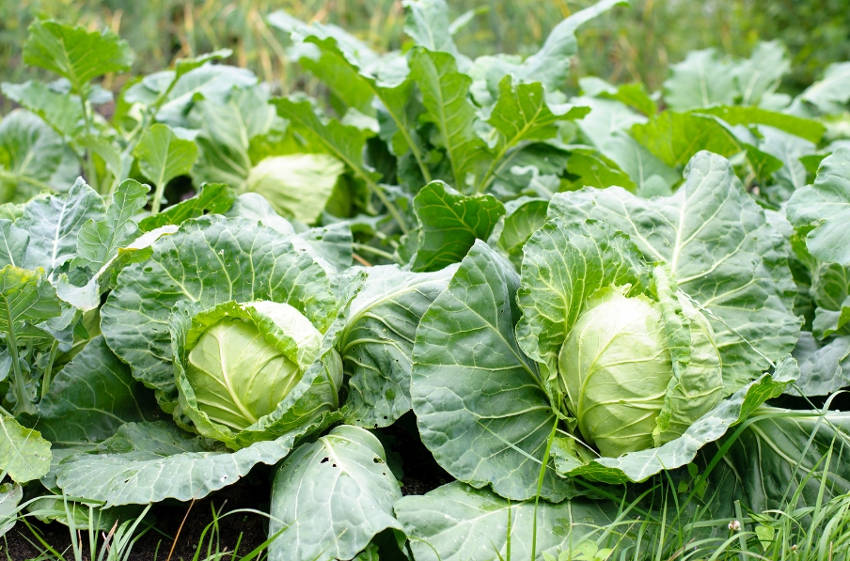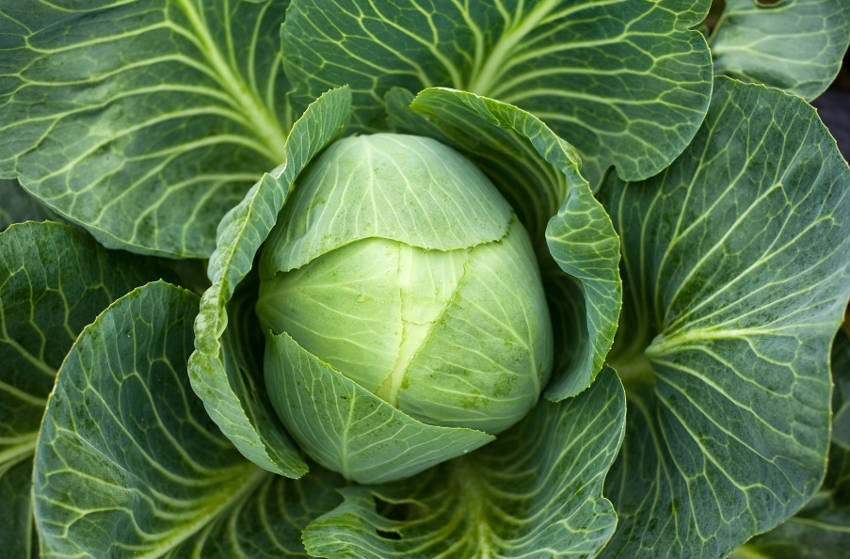Cabbages are one of the most popular crops for home gardeners, and most veggie patches find space for one or two varieties. However, for many people, the results are a little disappointing.
Instead of the tight, dense heads found in store-bought cabbages, home-grown examples often feature loose, ill-defined heads, or even no head at all.
This unfortunate situation has several possible causes. Here are the most common, along with the ways to handle them.
1) Different Varieties
The cabbage family is a wide one, and different varieties within the Brassica oleracea species have very different shapes. Some, such as kale, grow single leaves on central stems rather than bunching into heads. At the other extreme, Brussels sprouts grow many tight heads on a single plant.
Before worrying about your cabbages' lack of heads, check what level of head formation you can expect from that particular variety. It may be that a loose head is the natural state, and nothing to worry about.
2) Matter of Time
However, even within heading varieties, the development speed can vary. In general, heads only form toward the end of growth, once there are enough tougher outer leaves to protect the tender inner head.
In the early stages, a head may not even be recognisable, consisting only of small, tender leaves packed closer together than usual. Sometimes, patience will see a full and healthy head emerge surprisingly rapidly.
3) Heat Stress
If you're satisfied that your cabbages should be forming heads but nothing is happening, then stress of one form or another is the likely culprit. Under difficult conditions, a cabbage will devote its energy towards producing early seed rather than the luxury of a head.
This process is called bolting, and you can recognise it by the appearance of a strong central stem sprouting from where the head should be. Once this arrives, the chances of a head developing are remote, no matter what you do.
One of the main causes of bolting is extreme heat or sunlight. Cabbages prefer relatively cool, damp conditions, so sow your seeds in spring or autumn, to avoid the worst of the summer heat.
4) Excessive Cold
Similarly, although many cabbage varieties are frost hardy, they won't grow well under excessively cold conditions. Again, plan your sowing to avoid likely low temperatures during the vital head-forming stage at two to three months.
5) Lack of Water
Producing a compact head takes plenty of foliage, and this in turn needs plenty of water. Too little, and your water-stressed cabbages are likely to bolt. For best results, water deeply and infrequently, rather than little and often.
6) Waterlogging
However, take care not to overwater. Cabbages sitting in soggy soil are at risk of mould and rot, neither of which promotes healthy head formation. Although you need to water generously, ensure the soil has good drainage to avoid waterlogging.
7) Club Root
Club root is a disease which badly stunts the growth of all brassicas, including cabbages. It's caused by a soil-borne pathogen for which there's no cure.
Unfortunately, once a soil becomes infected, a lack of heads in your cabbage crop is the least of your problems. You'll likely need to stop growing brassicas nearby altogether.
The best defence is prevention, and this is done by practising crop rotation to avoid growing cabbages in the same place within a three year period. Also, grow all your brassicas from seed, as buying in seedlings can import the problem to your garden.
8) Pest Damage
Cabbages that are under heavy attack from pests will likely divert their energies to seed production while they still can. This is especially true for younger plants with less resources to draw on, but careful pest control is important throughout the growing season.
9) Overcrowding
Another common cause of bolting is overcrowding. With cabbages, it's vital to pay attention to the spacing recommendations on the seed packet. Although at the seedling stage it may look like you're wasting space, as the plants mature they'll quickly fill the gaps they're given.
10) Nitrogen Deficiency
Lastly, cabbages require a good amount of nitrogen to grow healthy foliage, particularly in their early stages. If your cabbages are small and yellowing as well as lacking heads, nitrogen deficiency is a possibility.
However, don't rush into applying a nitrogen-rich fertiliser before confirming. Too much nitrogen is just as harmful as too little, as it can block the uptake of other vital nutrients.
The best way to maintain a healthy nitrogen level is to incorporate plenty of organic material into your veggie beds as part of ongoing soil improvement. However, adding a balanced fertiliser with a light touch is an effective short-term measure.
In an ideal world, every cabbage you grow would form a perfect, compact head. But don't forget that unless your cabbage is diseased, it's still perfectly edible whatever its final shape.
So don't let underdeveloped heads discourage you. Your efforts haven't been wasted, and if you avoid these ten problems you stand a great chance of a better-looking harvest next time around.
.jpg)









